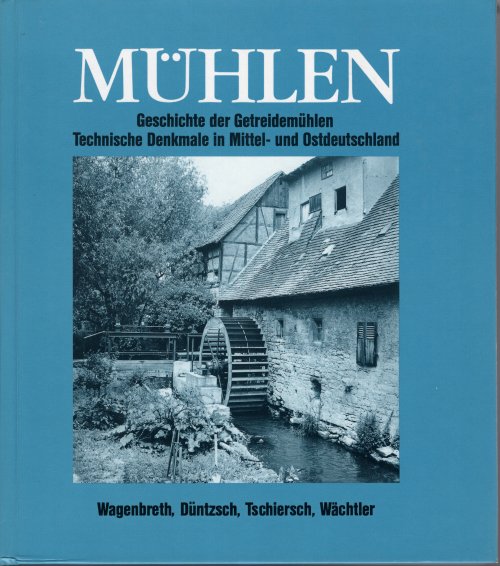Muhlen: Geschichte der Getreidemuhlen Technische Denkmale in Mittel- und Ostdeutschland
Full details
| English title | Mills: A history of cereal mills- engineering heritage in Central and Eastern Germany |
| Authors & editors | Wagenbreth, Otfried [Author] |
| Publisher | Deutscher Verlag für Grundstoffindustrie |
| Year of publication | 1994 |
| Languages | German (main text) |
| Medium | Book |
| Edition | 1 |
| ISBN | 3342006722 |
| Topics | Wind & watermills > Other Europe (not GB) > Germany, Austria & Switzerland |
| Tags | |
| Scope & content | Summary Translation A scholarly book which looks at the role of grain milling in the political and cultural history of central Europe from the beginning to the present; the details of the technical developments, including the development of turbines and modern industrial milling; and describes some historical mills, including some in the former GDR in the hope of encouraging conservation work.The first part describes grain milling technology and the motive power used. It then goes on to mills and millers in history, with key dates, feudal owners, coast of arms with mill motifs, place names referring to mills, surnames related to mills in different parts of Germany, field and street names related to mills, the reputation of millers, millers’ associations and edicts, historical dates relevant to milling.The book goes on to describe types of windmills and water mills and their location; it also covers floating mills, steam mills and industrial mills and their uses.It then looks at the mills used for oil, mustard and the grinding of bones.It moves on to millwrighting and millstone quarrying, and then the evolution of technical knowledge required for millers.The next chapter covers mills in art, with a list of selected paintings from Durer to the early 20th century, and references to mills in poetry and popular stories.After a timeline starting around 16,000 BC with the earliest rubbing stones and ending in 1990/2, it looks at the conservation of mills as heritage monuments.The remainder of the book lists mills in central and eastern Germany, with brief details about each. It has an index of personal names, and a separate index of mills.The book is illustrated with diagrams, maps, tables and black-and-white photos and historical reproductions showing mills, components, locations and millers. |
Copies held
Accession no. 22737
- Shelf location: C114-WAG
- Advance notice required to view in person
Pictures

